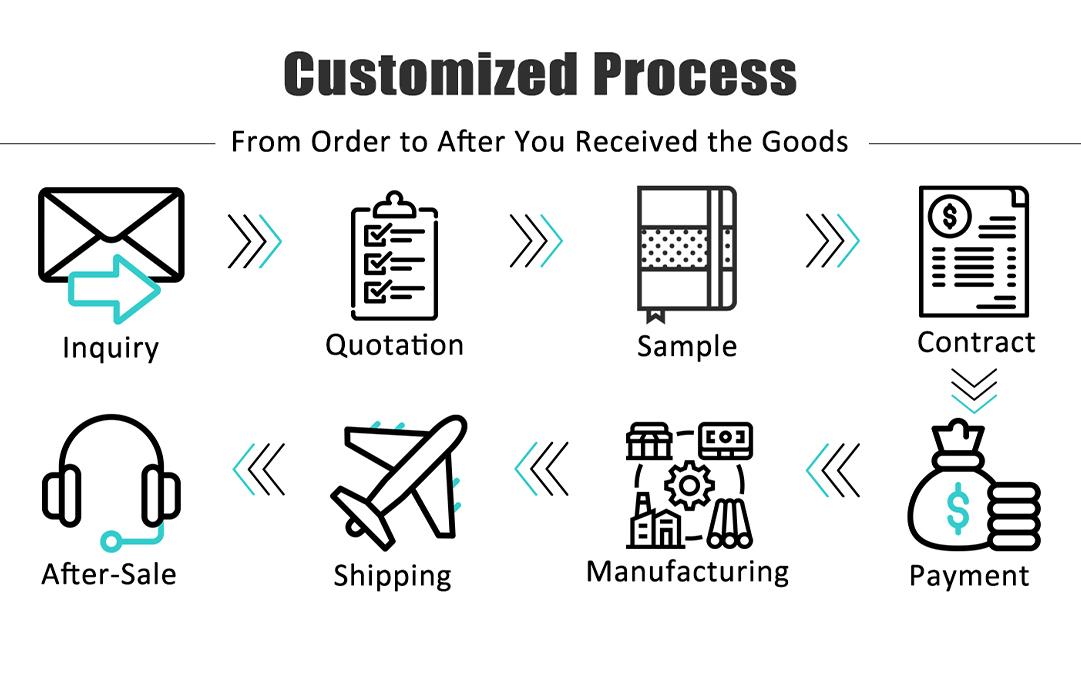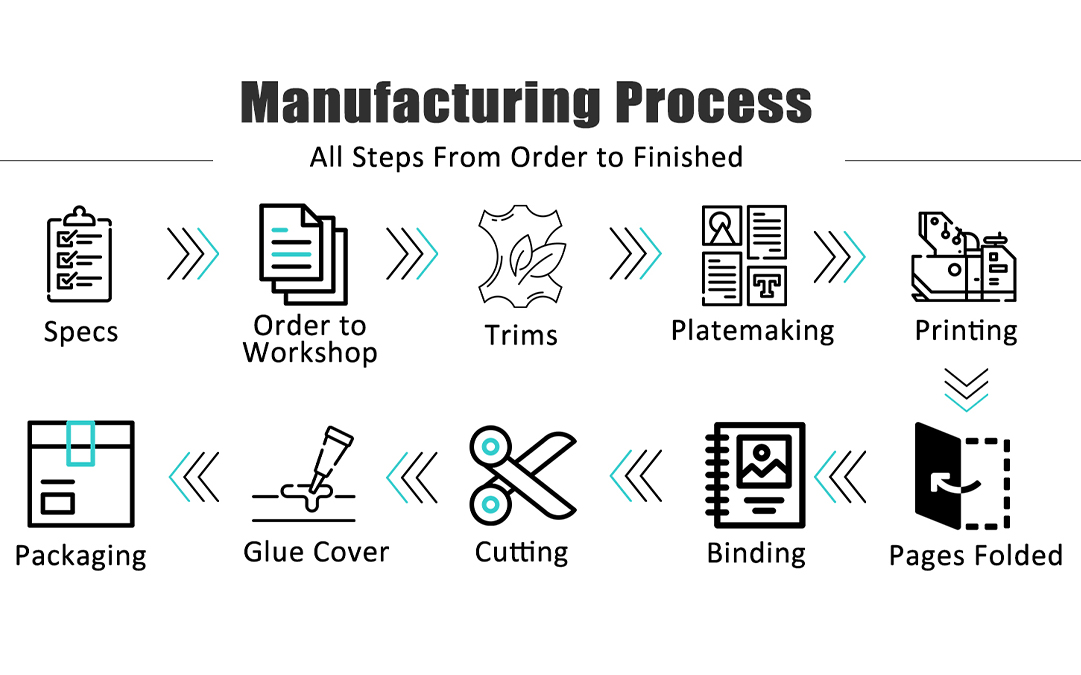How to Collaborate with Designers for Unique Design Your Own Notebook
Introduction
Creating a notebook that stands out in the market involves more than just quality materials and craftsmanship. It requires a unique design that resonates with your brand and your audience. To achieve this, effective collaboration with designers is crucial. This blog explores how to work seamlessly with designers to design your own notebook, ensuring every detail aligns with your vision and brand identity.
Setting the Foundation for Design Collaboration
Define Your Vision Clearly
Before approaching a designer, have a clear vision of what you want. Define the purpose of the notebook, the target audience, and any specific themes or elements you want included. This clarity will serve as a guiding light throughout the design process.
Choose the Right Designer
Selecting a designer whose style aligns with your vision is essential. Look through portfolios, review past work, and read client testimonials to find a designer who can bring your ideas to life. Ensure they have experience in custom notebook design.
Communicate Your Brand Identity
Your notebook should reflect your brand’s identity. Share your brand guidelines with the designer, including color schemes, logos, fonts, and any other brand-specific elements. This will ensure consistency and coherence in the final product.
Design Elements to Consider
Cover Options
Choosing the right cover is crucial as it’s the first thing people notice. Options include:
- Hardcover: Durable and professional.
- Softcover: Flexible and lightweight.
- Cloth: Elegant and tactile.
- Pull-up Leather: Luxurious and timeless.
- Regular Paper: Simple and cost-effective.
- Premium Paper: High-quality and distinctive.
- Color Printing: Vibrant and eye-catching.
- Hot Stamping: Adds a metallic shine for a premium look.
Inner Page Printing
Decide on the style of the inner pages to match the notebook’s purpose:
- Black and White Printing: Classic and professional.
- Color Printing: Adds vibrancy and highlights important sections.
Binding Options
The binding method affects the notebook’s durability and usability:
- Glue Binding: Strong and seamless.
- Ring Binding: Allows easy page turning.
- Smyth Sewing: Durable and high-quality.
- Punching: Adds a unique aesthetic touch.
Paper Types
The type of paper can significantly impact the writing experience:
- Double Adhesive Paper: Smooth and versatile.
- Coated Paper: Glossy and great for printing.
- Premium Paper: High-end feel and durability.
Logo Processes
Adding your logo is a great way to promote your brand:
- Hot Stamping: Elegant and shiny.
- UV Printing: Durable and vibrant.
- Color Printing: Flexible and versatile.
- Lamination: Adds protection and a glossy finish.
- Die-Cutting: Unique shapes and designs.
Effective Collaboration Strategies
Hold Regular Meetings
Schedule regular check-ins with your designer to discuss progress, provide feedback, and make necessary adjustments. This keeps the project on track and ensures both parties are aligned.
Be Open to Suggestions
While you may have a clear vision, designers bring valuable expertise to the table. Be open to their suggestions and willing to explore new ideas that could enhance the final product.
Provide Detailed Feedback
When reviewing design drafts, provide specific and constructive feedback. Highlight what you like and what needs improvement, and explain why certain changes are needed.
Use Visual References
Share visual references such as mood boards, sketches, or examples of designs you admire. This helps the designer understand your aesthetic preferences and design expectations.
Respect the Designer’s Process
Designers have their creative processes and timelines. Respecting their methods and deadlines fosters a positive working relationship and leads to better outcomes.
Addressing Common Challenges
Managing Different Time Zones
If your designer is in a different time zone, establish a clear communication schedule that works for both parties. Utilize tools like email, project management software, and video calls to stay connected.
Handling Revisions
Revisions are a natural part of the design process. Set clear guidelines for the number of revisions included in the project scope to avoid misunderstandings and additional costs.
Balancing Creativity and Practicality
Striking a balance between a creative design and practical functionality is key. Ensure the notebook design is not only visually appealing but also functional and user-friendly.
Actionable Steps to Ensure Success
- Create a Detailed Brief: Provide a comprehensive brief that includes all necessary details about your project.
- Set Clear Deadlines: Establish realistic timelines for each stage of the design process.
- Agree on a Budget: Discuss and agree on the project budget upfront to avoid surprises later.
- Sign a Contract: Outline the scope of work, payment terms, and any other important details in a formal agreement.
- Use Project Management Tools: Tools like Trello, Asana, or Basecamp can help manage tasks, deadlines, and communication.
- Provide Resources: Share any necessary resources with your designer, such as images, fonts, or brand guidelines.
- Review and Approve: Carefully review each design draft and provide timely approvals to keep the project moving forward.
- Plan for Production: Coordinate with your printer to ensure the design files meet their specifications.
- Test Samples: Order samples to review the final product before mass production.
- Launch and Promote: Once your notebooks are ready, plan a launch strategy and promote them through your channels.
Conclusion
Collaborating with designers to design your own notebook can be a rewarding experience when approached with clear communication, mutual respect, and a well-defined vision. By considering all aspects of customization and maintaining a collaborative spirit, you can create a notebook that is not only unique but also perfectly aligned with your brand’s identity.
Related Questions and Answers
Q: How do I choose the right cover material for my custom notebook?
A: Consider the notebook’s purpose, target audience, and your brand’s aesthetic when choosing a cover material. Options range from durable hardcovers to luxurious leather.
Q: What binding method is best for a professional look?
A: Smyth sewing is highly recommended for a professional and durable finish.
Q: How can I ensure my logo stands out on the notebook?
A: Use techniques like hot stamping or UV printing for a striking and durable logo presentation.
Buying Guide
When planning to design your own notebook, consider the following:
- Purpose: Define the notebook’s use – is it for daily planning, journaling, or promotional purposes?
- Audience: Understand who will use the notebook – professionals, students, or clients.
- Customization Options: Evaluate all customization options for cover, binding, paper type, and printing methods.
- Budget: Determine your budget and find a balance between quality and cost.
- Supplier: Choose a reliable supplier with a proven track record in custom notebook printing.
- Samples: Always request samples before finalizing your order.
- Timeline: Ensure the production timeline aligns with your needs, especially for events or promotions.
- Design Collaboration: Work closely with your designer to bring your vision to life.
- Quality Control: Implement a robust quality control process to ensure the final product meets your standards.
- Sustainability: Consider environmentally friendly materials and processes for your notebooks.
By following these guidelines and maintaining open communication with your designer, you can create a custom notebook that perfectly encapsulates your brand’s essence and meets your audience’s needs.
Contact Us: Ms. Rimo Lau WhatsApp Me
Whatsapp: 0086 18336352791 – WeChat&Phone
Website: www.fullcolorprintstationery.com
E-Mail: [email protected]





